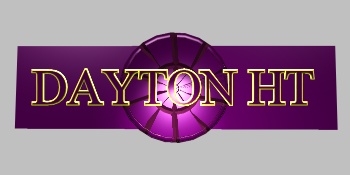
In building all of my other systems, I've been able to avoid making my own crossovers. I've used some semi-decent pre-built crossovers that gave satisfactory results. I've done some projects that have little or nothing for a crossover (maybe a series cap on the tweeter). As a result, I've been missing out on the performance potential of my drivers. The Dayton HT system is going to attempt to change all that.
The only goals for the system were that it sound good (obviously) and that it be relatively inexpensive. Although considerably cheaper than most commercial speaker systems, it is still the most expensive system I've ever built. As discussed briefly above, they system is also a huge departure from my previous designs in that it uses very high quality crossovers. In fact, the crossovers cost nearly as much as the drivers, if that's any indication of their quality. Obviously price isn't everything, it's the actual design of the crossover that's really important.
With that in mind, I began searching out information on crossover design. I've read every thread on every audio discussion board, poured over Vance Dickason's discussions in LDC, and even experimented with programs like Speaker Workshop. Unfortunately, the more I learned, the more scared I was to try my hand at designing my own crossover, especially with the drivers I'm using for this project (more on that later). I don't have any fancy test equipment - strike that, I don't have ANY test equipment - which seems to be my really big problem. For the kinds of systems I'm going to be building, I can't justify spending hundreds of dollars for the equipement. So that leaves me kind of stuck with "guessing" on the crossovers.
Fortunately, there are others in the world who DO have good test equipment. By strange coincidence, there are even a few people out there who were designing a similar speaker to my original intentions. The original idea was to modify some of my existing speakers by adding better crossovers. After seeing the work that went into their designs, I quickly decided that I could gain more by using someone else's design and end up with a guaranteed success.
Now to the scary part. The
whole system is comprised of 5 speakers, front left and right, rear surrounds,
and a center channel. The front and rear speakers are identical,
so that takes care of 4 out of the 5. That only leaves the center
channel. The main/surround speakers don't use shielded drivers, which
requires that a different design be used for the center channel.
I already had drivers in mind for this application, and I've not seen any
design that incorporates them. Now I'm on my own. After learning
as much as possible about the drivers, I think I'll be reasonably safe
in using "stock" crossover designs with a little impedence compensation.
So now there is a challenge - how good can a speaker sound with just stock
crossovers. We'll soon find out...
Testing
the Drivers
Initial
Enclosure and Crossover Design
Prototype
Enclosure
Final
Enclosure Construction
Conclusion
Photos